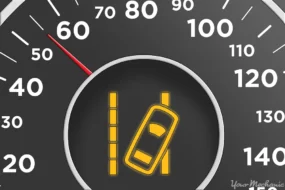Oxygen Sensor Problems Address sensor-related issues. a small yet crucial component in your vehicle’s engine management system, plays a pivotal role in ensuring optimal performance and fuel efficiency. However, like any mechanical part, oxygen sensors are prone to problems that can disrupt the delicate balance of air and fuel mixture, leading to reduced efficiency and increased emissions. In this article, we will delve into common oxygen sensor problems and provide insights on how to address these issues effectively.
Understanding the Oxygen Sensor
Before diving into potential problems, it’s essential to grasp the fundamental role of the Oxygen Sensor Problems Located in the exhaust system, the oxygen sensor monitors the amount of oxygen in the exhaust gases. This information is then relayed to the engine control module (ECM), which adjusts the air-fuel mixture for combustion. A properly functioning oxygen sensor is crucial for maintaining the ideal balance, ensuring fuel efficiency and minimizing harmful emissions.
Faulty Oxygen Sensor:
One of the primary issues drivers encounter is a faulty oxygen sensor. Symptoms of a faulty oxygen sensor include poor fuel economy, rough idling, and increased emissions. Regular maintenance checks, including sensor inspections, can help identify and address this issue promptly.
Oxygen Sensor Heater Failure:
Oxygen sensors often include an internal heater to reach optimal operating temperatures quickly. A malfunctioning heater can result in delayed sensor response and decreased accuracy. If your vehicle displays a “heater circuit malfunction” code, it’s crucial to inspect and, if necessary, replace the faulty sensor.
Contamination:
Contaminants such as oil, coolant, and silicone can affect the oxygen sensor’s performance. These substances can coat the sensor element, reducing its sensitivity and accuracy. Regular engine maintenance, including fixing leaks and using the correct fluids, can help prevent contamination issues.
Wiring and Connector Problems:
Faulty wiring or poor connections can disrupt the communication between the oxygen sensor and the ECM. This can lead to inaccurate readings and potential engine performance issues. Periodic checks of sensor wiring and connectors, along with proper repairs or replacements, can mitigate this problem. Now that we’ve identified common oxygen sensor problems, let’s explore effective ways to address these issues:
Diagnostic Scan:
When facing potential oxygen sensor problems, the first step is to conduct a diagnostic scan using an OBD-II scanner. This tool will retrieve error codes from the vehicle’s ECM, providing insights into specific sensor issues. Armed with this information, you can pinpoint the problem and proceed with targeted solutions.
Sensor Replacement:
In cases of a faulty oxygen sensor, replacement is often the most straightforward solution. Modern vehicles typically have multiple oxygen sensors, and the diagnostic scan will specify which one requires attention. While replacing oxygen sensors is a task that can be performed by experienced DIY enthusiasts, it’s advisable to seek professional assistance for accurate installation.
Heater Circuit Repair:
If the diagnostic scan indicates a heater circuit malfunction, addressing this issue promptly is crucial. Heater circuit problems are often caused by damaged wiring or connectors. Carefully inspect the sensor’s wiring, repair or replace damaged components, and ensure proper connections to restore the sensor’s heating function.
Contamination Remediation:
Contaminated oxygen sensors may be salvaged through cleaning, but replacement is often the more reliable option. If contamination is recurrent, addressing the root cause, such as fixing oil or coolant leaks, is essential to prevent future sensor issues. Regular engine maintenance and using high-quality fluids can contribute to sensor longevity.
Wiring and Connector Checks:
To address wiring and connector problems, visually inspect the sensor’s wiring for signs of damage or wear. Ensure that connectors are clean, properly seated, and free from corrosion. If issues are detected, repair or replace damaged wiring and connectors to establish a reliable connection.
Conclusion
In conclusion, understanding and addressing Oxygen Sensor Problems is crucial for maintaining your vehicle’s performance, fuel efficiency, and emission levels. Regular diagnostic scans, timely replacements, and proactive maintenance are key practices in ensuring the longevity and accuracy of oxygen sensors. By taking a proactive approach to sensor-related issues, you not only enhance your driving experience but also contribute to a cleaner and more efficient operation of your vehicle.











